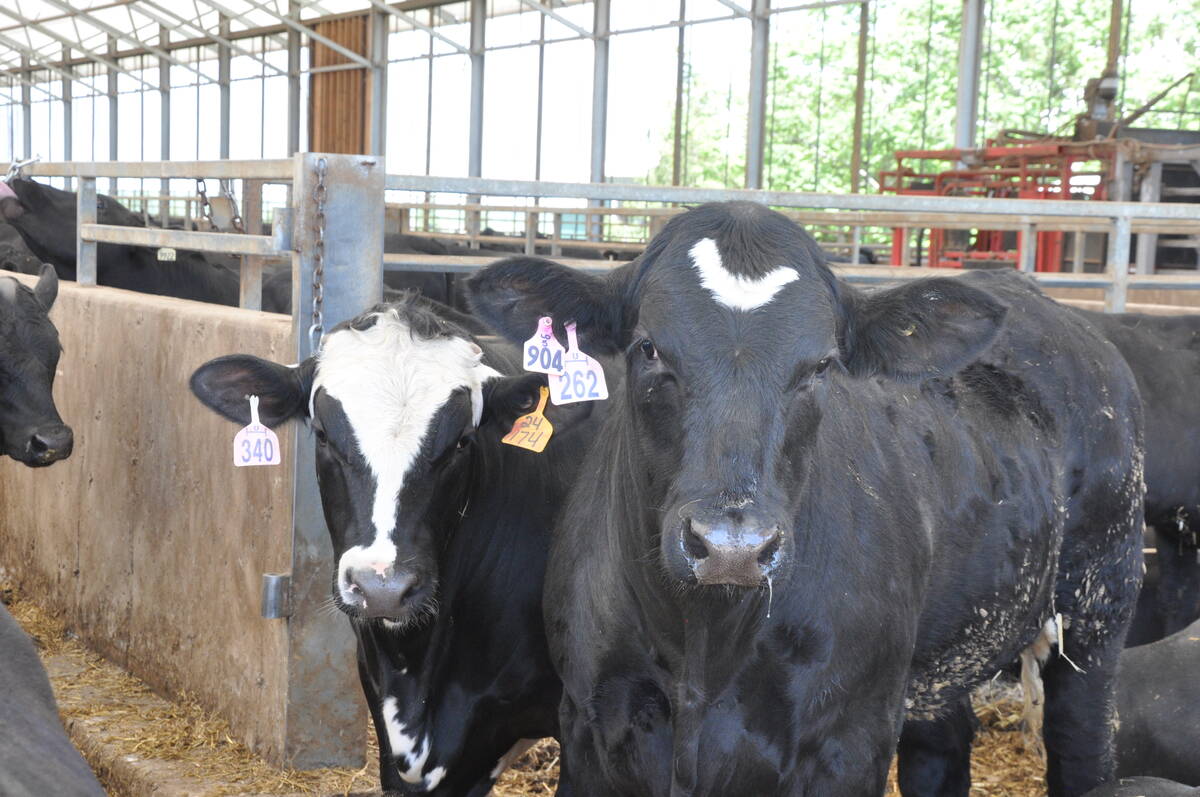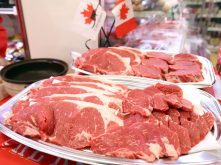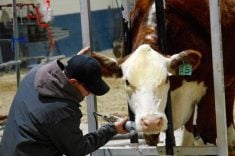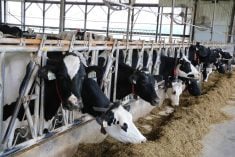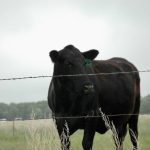Beef-on-dairy has made a lot of economic sense for a lot of Canadian dairy farms. Feedlots are using them to bridge gaps in the feeder market. They’re providing an robust income stream for dairy producers.
Looking at the trends and the market risks, one analysts suggest the already intertwined sectors are being pushed even closer together.
WHY IT MATTERS: Adding beef genetics into dairy herds has allowed Canadian dairy farms to tap into the same high animal prices that beef producers are enjoying at auction.
Read Also
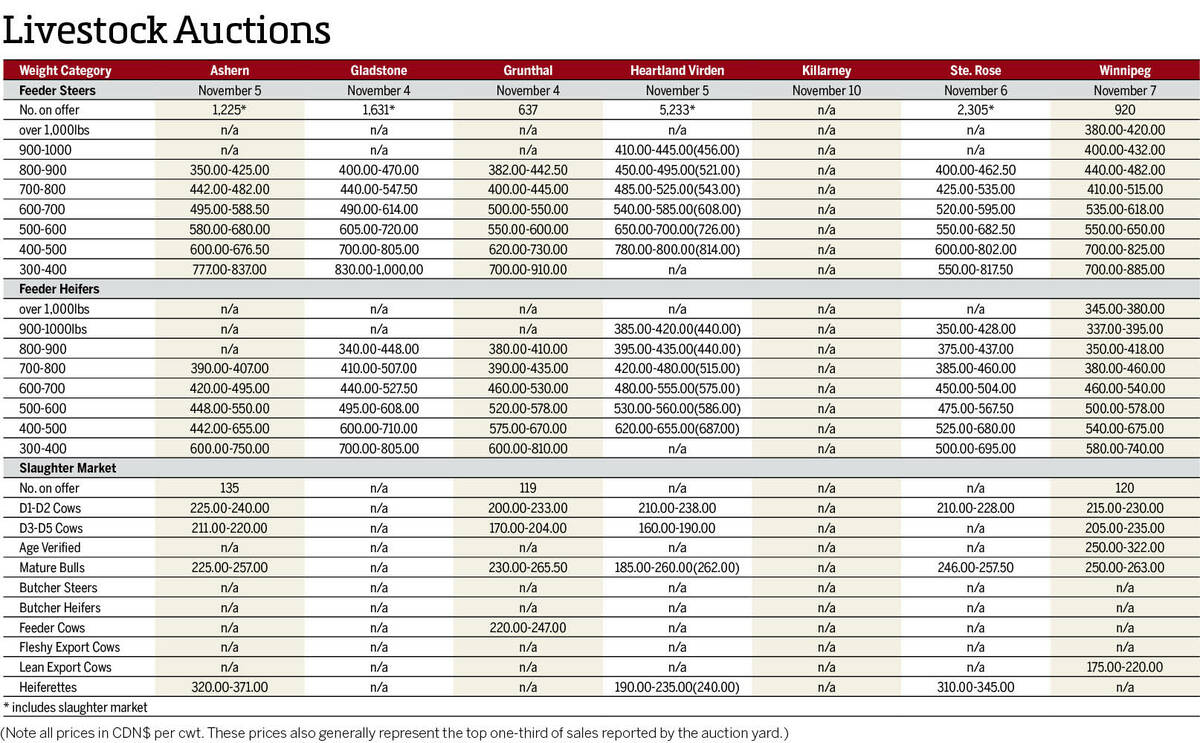
Manitoba cattle prices – Nov. 10
Cattle prices from Manitoba’s major auction marts for the week of Nov. 4-10.
The popularity of cross-bred calves has surged in the last 15 years. Estimates suggest they currently make up nine per cent of Canada’s beef supply, up from two per cent in 2010.
The idea is to diversify the dairy herd to get the best of both marketing worlds. Top milk producers in the herd may be bred with sexed semen to produce the next generation of milkers, but most cows are bred to beef. Their calves —endowed with meat-focused genetics —are then raised, sold and finished for the beef stream.
Graeme Crosbie, a senior economist with Farm Credit Canada (FCC), has noted how the spread of the practice may shift financial fundamentals of the cattle business, both for dairy and beef. Producers may need a new take to contingency planning.
For one thing, significant ties between beef and dairy sectors means that milk demand will have more impact on beef cattle supply and, therefore, price, he argued in an FCC blog post.
“The rise of beef-on-dairy crossbreeding has provided opportunities for producers, feedlot operators, and packers, including a year-round supply of calves. But if the demand for milk were to increase it would cause a further short term beef supply crunch, pushing up already-elevated beef prices,” wrote Crosbie.

The ripples of that kind of demand surge, however, would like resolve itself over time, he said.
More milk demand would ultimately lead to a larger dairy herd, which would lead to more calves, which would fill in the beef supply crunch created when more cows were needed for milk.
“One thing is clear: this is a trend that is not abating anytime soon, and its growing importance in the supply of Canadian beef is noteworthy,” the economist said.
Self-correcting beef shock
Crosbie posed a hypothetical scenario: Say that Canada needs a 10 per cent increase in milk supply for 2027. For simplicity’s sake, he disregarded the role of U.S. dairy and beef-on-dairy feeder imports — a burgeoning source of feeder cattle for Canadian feedlots — on the analysis.
In Crosbie’s scenario, the extra demand for milk would require an extra 96,940 cows by 2027 in order to meet the demand for milk. Assuming a nine per cent loss rate on heifers born, that would drive a need to swap out 107,000 beef-on-dairy calves from the beef supply chain with pure dairy replacement heifers.
That would be a 35 per cent reduction of beef-on-dairy calves relative to the baseline in 2025, and a three per cent reduction in beef available this year — the year those heifers would have to be born in order to fulfill their milking duties in 2027.
Crosbie described this a “one-time shock,” with long term impacts actually being more animals in the beef supply chain.
“As those heifers become fresh cows in 2027, the total dairy cow inventory increases and, as breeding cycles continue from that point on, more beef-on-dairy calves can theoretically re-enter the supply chain. By 2028, beef-on-dairy contribution to the beef supply chain is 10 per cent above the baseline,” he noted.
However, Crosbie’s scenario is atypical, especially with supply management keeping milk supply on par with demand.
Demand and supply for dairy in Canada is generally stable, although Crosbie pointed growing consumption of yogurt (up eight per cent), ice cream (6.3 per cent) and butter (4.2 per cent) in 2025.
Veal producers lose out
Crosbie said conventional beef producers are starting to side-eye the additional competition, although official voices for the beef sector have had a different tone.
“It’s not, in my mind, a concern that they’re going to saturate our market at all,” Dennis Laycraft, Canadian Cattle Association executive vice-president, said late last year when asked about the rise of beef-on-dairy. “Quite the opposite. I think we’ve got room to grow, both in terms of beef cow numbers and our export trade around the world.”
The market is plenty hungry for cattle. Canada’s cattle herd have been slipping for years, and hit their lowest point since 1988 at the start of this year. And while there have been some inklings of a rebuild cycle, they’ve been slow to get off the ground, and the impact of rebuilding would take years to play through.
Laycraft further noted that “demand for high quality beef is growing faster than production is right now around the world, and this is forecast to certainly go well into the next decade.”
Other facets of the cattle industry have seen disruptions though. The Holstein bull market has crashed as more dairy farms reach for beef sire genetics. Meanwhile, the veal market is struggling with a supply shortage as the Holstein bull calves that historically fed it are instead moving to crosses bound for the standard beef market.
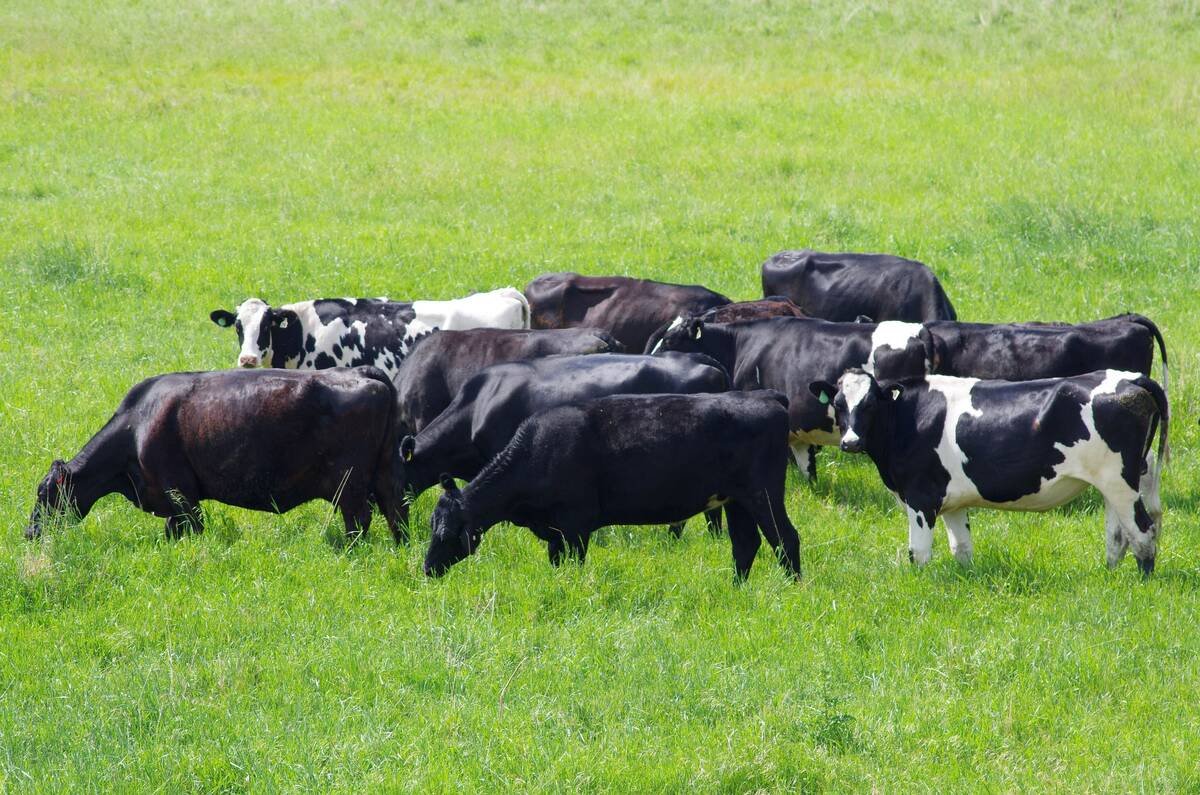
Aside from the shortage of Holstein calves, Canadian Veal Association administrator Jennifer Haley said the “astronomical” expense of the cross-breeds, the same prices that have been a boon for dairy producers, are a crucial drawback for her industry.
“One of the misconceptions I think that people have is that the veal industry doesn’t want the cross-calves. We can feed those calves. We just can’t afford to feed those calves right now because they’re so high-priced,” she said.
“With the price that they’re at right now, we can’t compete because we can’t put as much weight on them as what a beef producer can and so we don’t get that return on investment the same way.”
The beef cattle shortage is creating an unprecedented gravity pull for dairy calves that is hard for the veal sector to compete with, Haley noted. It’s difficult to source the animals needed to maintain production.
“That’s never been a thing before,” she said. “We’ve been side by side all along and we’ve never seen this pull on the dairy calf from the beef sector before.”
The new normal
It’s unlikely, however, that beef-on-dairy will be a passing fad. Instead, both Crosbie and Haley expect that beef-on-dairy crossbreeds are digging in as a fixture of the industry.
“I think these are here to stay,” Haley said. “It’s just a matter of price and what production system they’re going to fall into. Are they going to stay in the beef production system? Are they going to go back into the traditional veal feeding programs?”


